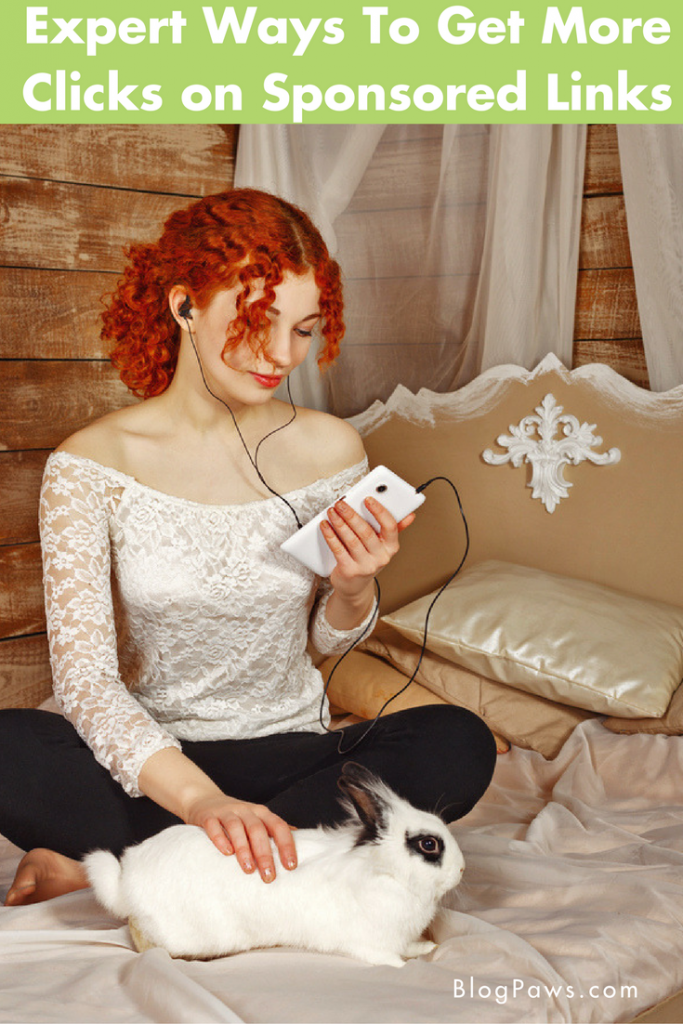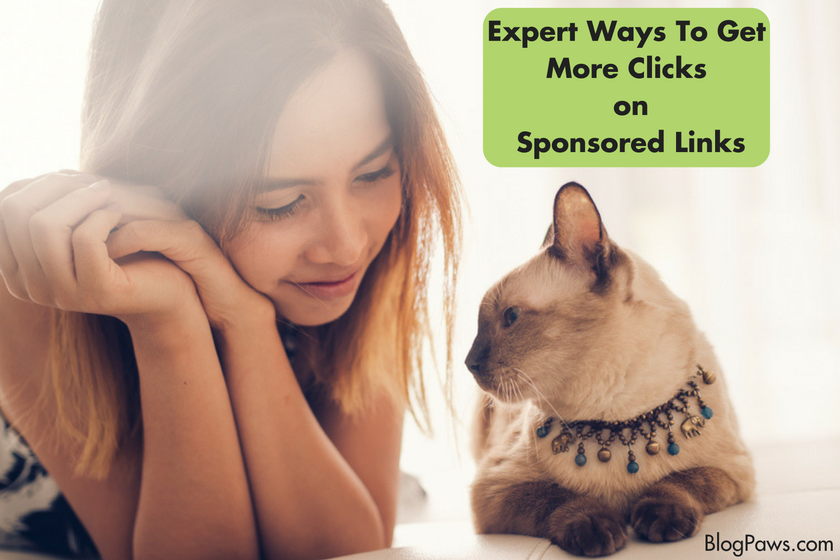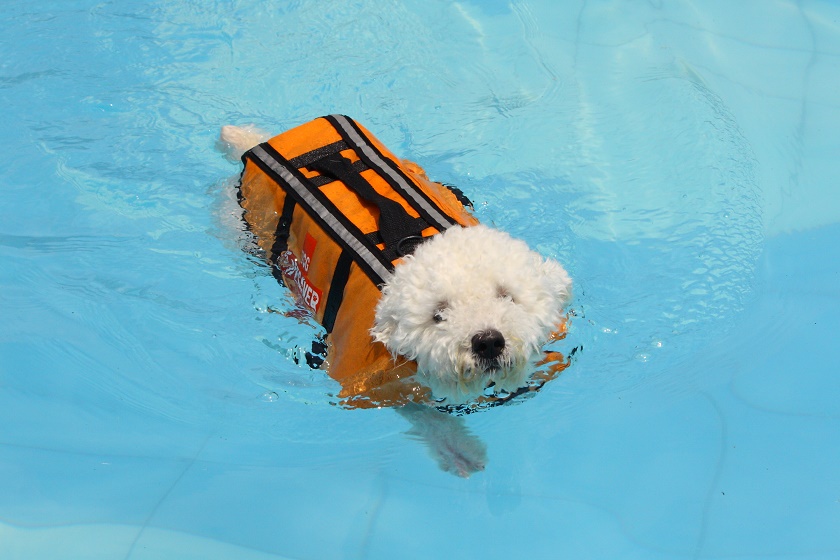Expert Ways To Get More Clicks on Sponsored Links
The click of a mouse makes all the difference to a blogger and those on social media (you know, like the whole world). Think about what it takes to make a person stop, ponder if they should click on something, and then actually do it on sponsored links. Your target is on the other side of your screen doing the same thing you are: Living their life, having marketing messages bombard them multiple times a day, and being instructed that something will happen when they click a link.
“To make someone twitch their digit, you must reach inside their brain and pull a lever. This is not done by being boring, by being dull, by being a fact factory,” Forbes contributor Susanna Breslin says in a timeless piece.
So, just what is that magic sauce that you pour over a sponsored link—you know, the ones that make you and the sponsor profit in some way—to get a reader to click through? Here is a handy list of do’s and don’ts for getting people to click through sponsored (or other) links.
Do’s
Do Use Long-Tail SEO Where Appropriate
Think of the words you type into a search engine to merit a quality result. For example, “ways to help train my cat to use the litter box” is something a pet parent would type into Google if they had such an issue. You wouldn’t type in “cat litter box” and expect to get the same results. When working with a brand, use the same strategy.
For example, “What cat litter is most effective against odor” and link to the brand sponsored link for cat litter. That sounds and looks more engaging than “Here’s ABC Cat Litter Brand.”
BlogPaws’ Director of Influencer Marketing, Felissa Elfenbein, says, “Another idea is to ask a question at the end that requires a click on the link, as in the examples below:”
- What flavor would your cat love? {link}
- What color best matches your house? {link}
- Is there a store near you that carries the product? {store locator link}
Do Provide Link Inclusion in Social Shares
When working with brands, you are also sharing the blog post on social media. Be sure to include links to the brand in your social shares, especially on Twitter where you can share multiple times at different times of day and days of the week.
Do Provide Great Content
And, by great, we mean quality and relevant content.
“Getting people to click on a link in a sponsored post requires great content; you need to draw them into your content in order for them to want to learn more, “ Elfenbein shares. “You are asking them to invest in you by trusting that the link will provide something of value to them and worth the effort of the click.”
Learn More Here: Seven Steps for Writing a Successful Blog Post
Do Experiment With Sponsored Link Placement
Structuring your sentences so that your link anchors come towards or at the end is a popular strategy. Links are spotted more easily since the reader sees the hyperlink as soon as they finish reading the sentence. As a reader, I am more inclined to click something if it comes at the end of a sentence than to go back and have to hunt for it in the blog post later. Everyone’s in a hurry. Make the hyperlinks easy to find.
Like this:
For more dog training tips, check out Nine Ways to Prevent Dog Bites.
Don’ts
Don’t Put Too Many Links In One Blog Post
On average, most blog posts run from 350 to 550 words these days, with longer form a popular option from time to time. Too many links are a turn off and also appear spammy. How many is too many? It really depends on the length and substance of your post. Anywhere from 3 to 5 for shorter posts, but even more links if needed.
Don’t Appear Spammy
Never make your links or call to action to click on the link spammy. You may lose the trust of your readers.
Don’t Go The Click Bait Route
Click bait is something that sounds oh-so-enticing but the reader won’t actually know what the content is until they actually click through. Over and over, various online studies report that most people want to know what the link is about and then decide if they want to visit. Consider this example:
Click to get the hottest news about gerbils. (The reader has no clue what that means exactly. Hot how? Trendy? Are you trying to get me to buy gerbil products?)
vs.
Find out what activity centers are best for gerbils. (This is direct, clear, concise, and tells the reader what to expect when they click).
Always deliver on your link and do not send the reader to anything expect the promised quality content.
Don’t Be Swayed By Brands Who Ignore “No Follow” Tags
At least weekly, I am pitched by a brand that asks me for a “dofollow” tag in a sponsored post. Every blogger should have an understanding of how to use the nofollow tag and why. Fortunately, it’s really easy.
Our Director of Influencer Marketing, Felissa Elfenbein, shared in the nofollow best practices post, “When you share sponsored content your readers can see and understand the words ‘this is sponsored content.’ When it comes to the bots that Google and other sites send out to check out your blog, they cannot read those words but they can read and understand HTML code.”
Learn More Here: Best Practices for Bloggers: What is a No Follow Tag?
Examples of Successful Anchor Text on Sponsored Posts
A blog post about the proper usage and placement of sponsored links would not be complete without some shining examples.
Post Title: Sully’s Food Switch #WeBelieveinNB
Blog: 4 Dogs and A Little Lady
Sponsored Link in Content: What really swayed me is Natural Balance’s “Buy With Confidence Promise” and the associated web page.
Why It Works: The anchor text is used in the natural flow and progression of the sentence, is very conversational, and it delivers on what the reader will find once he or she clicks through.
Post Title: Keep your Cats Happy with Odor Sealing Litter #CLUMPandSEAL
Blog: The Traveling Praters
Sponsored Link in Content: You can visit this PetSmart store locator to find a store near you to stock up on the ARM & HAMMER litter that best fits your lifestyle.
Why It Works: The reader knows where to find their local PetSmart store if they click the link, thus they can go shopping for the product mentioned.
Post Title: Why We Believe In Natural Balance #WeBelieveinNB
Blog: Budget Earth
Sponsored Link in Content: Each of their foods is also formulated by nutrition experts using high quality ingredients including vegetables, fruits, and high quality proteins like chicken, lamb, salmon, and my girls’ personal favorite, venison.
Why It Works: Quality ingredients is the hyperlink and it syncs nicely with the sentence. The reader is more likely to click through to find out exactly what “quality ingredients” mean if they are reading this blog post about Natural Balance dog food.
Now it’s your turn. What works for you in terms of getting folks to click on your sponsored links? How can we help answer your questions with regard to this topic? Let us know in the comments below.
Carol Bryant is the Marketing and Social Media Manager for BlogPaws and runs her own blog, Fidose of Reality and its fundraising arm, Wigglebutt Warriors. When not busy playing with her Cocker Spaniel, Dexter, she stays far away from cooking. Her trademark is her mantra and is tattooed on her arm: My Heart Beats Dog.®
Images: Vagengeim/Shutterstock.com and Happy Together/Shutterstock.com





